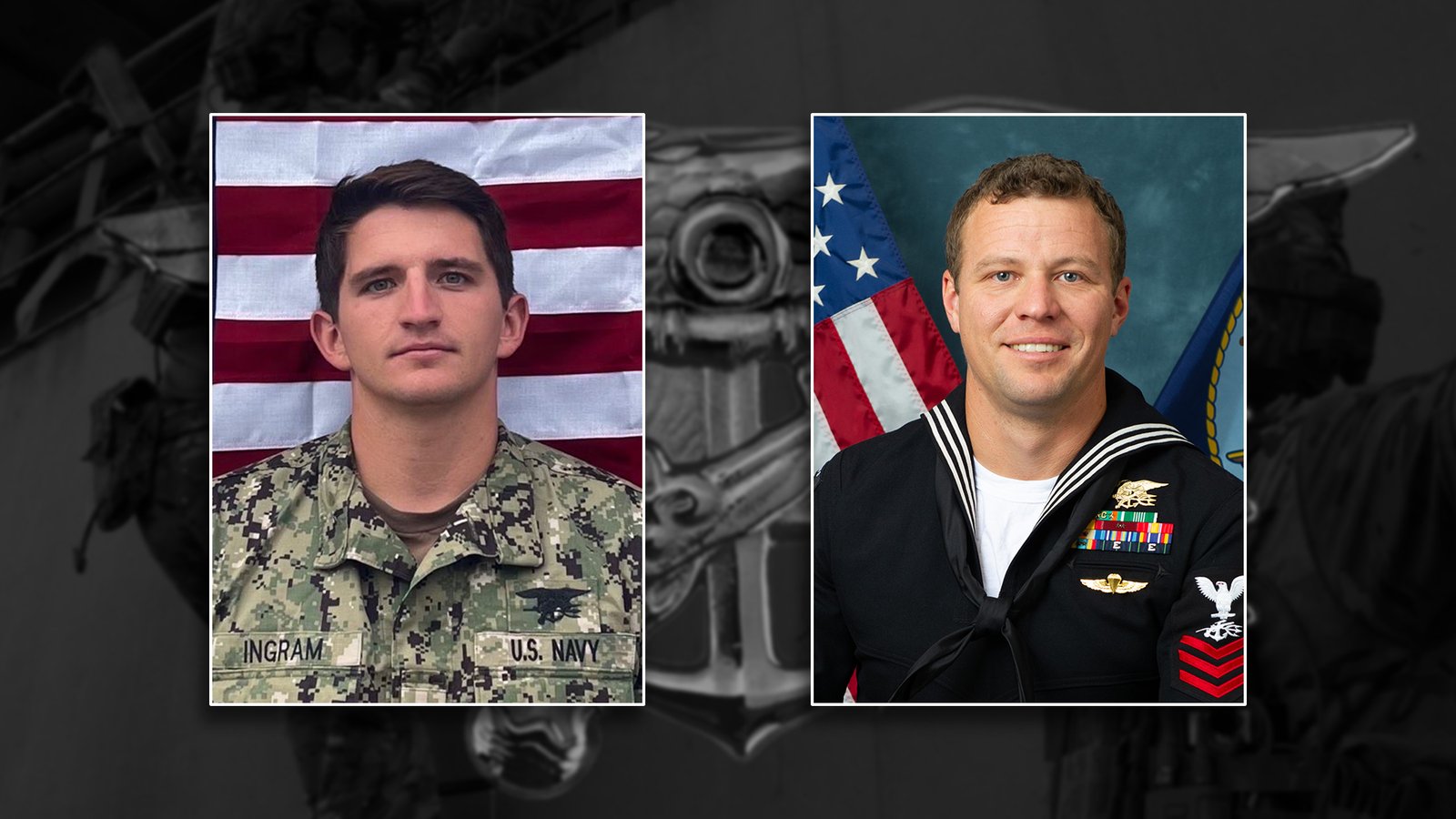A Navy investigation into the deaths of two SEALs, who went overboard in January while trying to board a ship carrying Iranian-made weapons, shows just how dangerous Visit, Board, Search and Seizure, or VBSS missions are.
The two SEALs took part in a nighttime operation on Jan. 11 off the coast of Somalia. Their mission was to board a dhow that was carrying ballistic and cruise missile parts to Iranian-backed Houthi rebels in Yemen.
Chief Special Warfare Operator Christopher J. Chambers fell from the side of the dhow into the water, and Navy Special Warfare Operator 1st Class Nathan Gage Ingram jumped in to try to save him.
“Encumbered by the weight of each individual’s fear, neither their physical capability nor emergency supplemental foliation devices, if activated, were sufficient to keep them at the surface,” according to a redacted copy of a Navy investigation into the incident, which was first reported by the Associated Press.
Both SEALs were only able to reach the surface “intermittently” after falling in, the investigation found.
Subscribe to Task & Purpose today. Get the latest military news and culture in your inbox daily.
“The entire tragic event elapsed in just forty-seven (47) seconds, and two NSW warriors were lost to the sea,” according to the investigation.
The Navy’s investigation also recommended a series of changes to training and guidance, such as formalizing parts of the pre-mission buddy check, to make sure that SEALs are able to stay above water if they fall in and they know how to use their flotation devices.
Some of the Navy personnel interviewed for the investigation said that they had only used their lifesaving gear once during their career — or not at all.
“The root cause of these drownings was a lack of failsafe and layered defense to provide buoyancy (expounded in this report), whether to overcome the weight of the equipment, fatigue from extreme physical exertion and resultant inability to tread water, or any injury suffered during the boarding process,” according to the investigation.
An inherently dangerous mission
Intercepting and boarding ships at night is one of the most dangerous missions that Navy special operators train for, a Navy SEAL previously told Task & Purpose.
“Everything is slippery, it’s dark, everything is moving, it’s f**king cold so you can’t feel sh*t,” said the SEAL, who spoke on condition of anonymity.
The SEAL, who has spent more than a dozen years in elite combat units, said he was more nervous conducting boarding missions than he was during HALO jumps, in which SEALs can freefall for tens of thousands of feet, usually at night, while carrying a hundred or more pounds of equipment.
“The only other time I felt similar was fast-roping from an Osprey,” the SEAL said. “The rope shoots out 45 degrees and you’re barely hanging on with hundreds of pounds of gear and if you fall it’s 50 feet to the ground. That’s the only other time I felt the kind of sketch I did doing VBSS.”
Several other SEAL veterans have told Task & Purpose that the most dangerous part of VBSS missions is the initial boarding, which usually comes after SEALs have been battered by the waves for a while in an inflatable raiding boat.
The SEALs then must climb aboard the ship, often in rough seas, using a ladder that is little more than a rope with handles. From there, the SEALs cling to the wet ladder rungs as they climb upward, being struck by waves as they go.
During the Jan. 11 mission, the dhow’s crew abandoned the wheelhouse, causing the ship to stop moving forward, the Navy investigation found.
“As a result, the sea state intensified the roll of the dhow as the boarding progressed, such that the combat craft — assault CCA [combat craft-assault] vessel carrying the assault team reset twice during the action to better reposition alongside the dhow,” according to the investigation.
The investigation recommended that Ingram receive a commendation for trying to save Chambers.
“In his effort to provide rescue and assistance to his teammate he ultimately gave his own life, demonstrating heroism and bearing witness to the best of the SEAL Ethos,” the investigation found.

